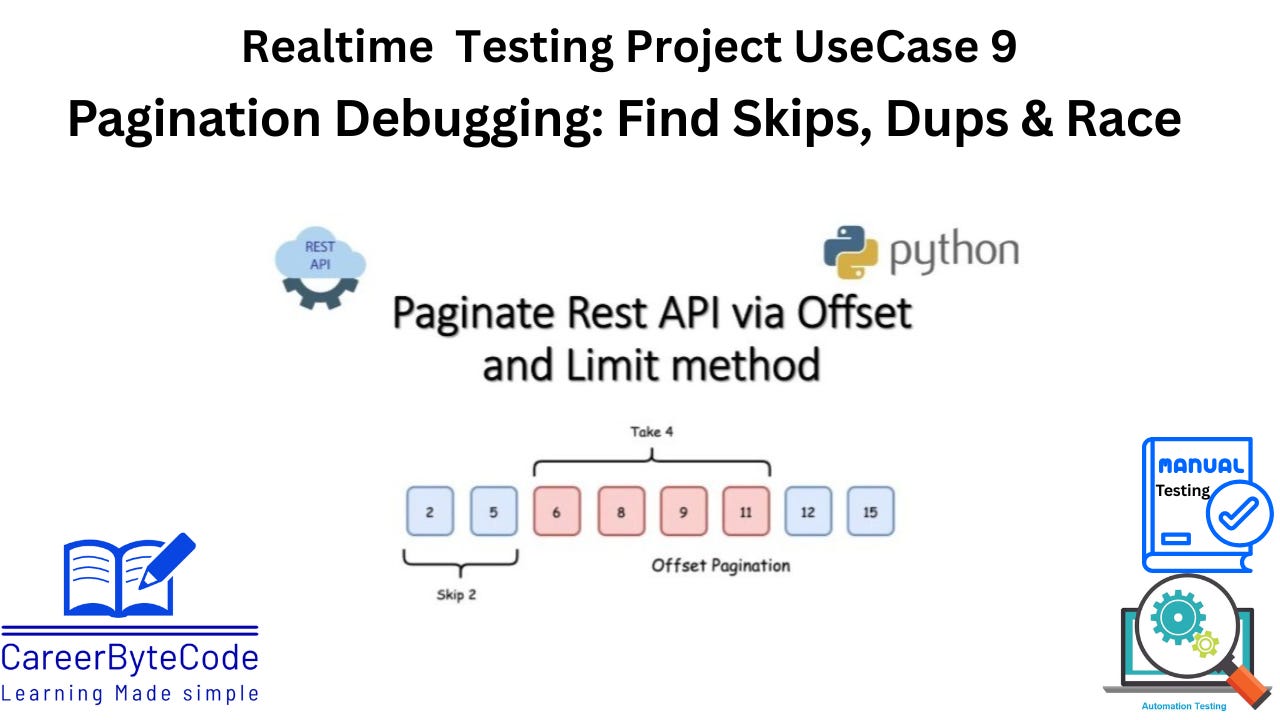Verify Pagination in API Response — End-to-End Pagination Validation (No Skips / No Duplicates)
Pagination Debugging: How to Find Skips, Dups & Race Conditions
1. Problem Statement:
Paginated API responses (e.g., /products?page=2) are showing inconsistent data or skipping records.
Scenario:
The product list API returns 20 records per page. Some items are missing or duplicated when switching pages.
Approach:
Use Postman to manually verify the API response for multiple pages.
Automate pagination calls using Rest Assured with loops.
Validate:
Total count matches expected records.
No duplicates or overlaps across pages.
All pages return HTTP 200.
Add Cucumber scenario for pagination check with dynamic page values.
Tools or Services to be Used:
Postman, Rest Assured, Java, Cucumber
2. Why we need this use case
Paginated APIs are the backbone of many list and catalog endpoints (products, users, orders). When pagination is buggy you can get missing records, duplicates, or inconsistent totals — which causes incorrect UI displays, broken analytics, wrong business decisions, and bad user experience.
This use case proves that the paginated API:
returns expected page sizes,
exposes an accurate total count,
provides non-overlapping unique records across pages,
responds with successful HTTP statuses for all pages.
Automating this check prevents regression of pagination logic (skip/limit/offset bugs, incorrect sorting, race conditions) and gives confidence before deployments or data migrations.
3. When we need this use case
Implement this whenever:
You deploy backend changes that touch list endpoints, DB queries, sorting, or index changes.
You change pagination implementation (offset → cursor, or change default page size).
You run database migrations that may affect ordering or record visibility.
You onboard a new data ingestion pipeline that may create near-real-time changes.
You want a CI/CD quality gate to prevent regressions on list endpoints.
Also run it in manual sanity checks using Postman after hotfixes and as part of automated smoke/regression suites.





